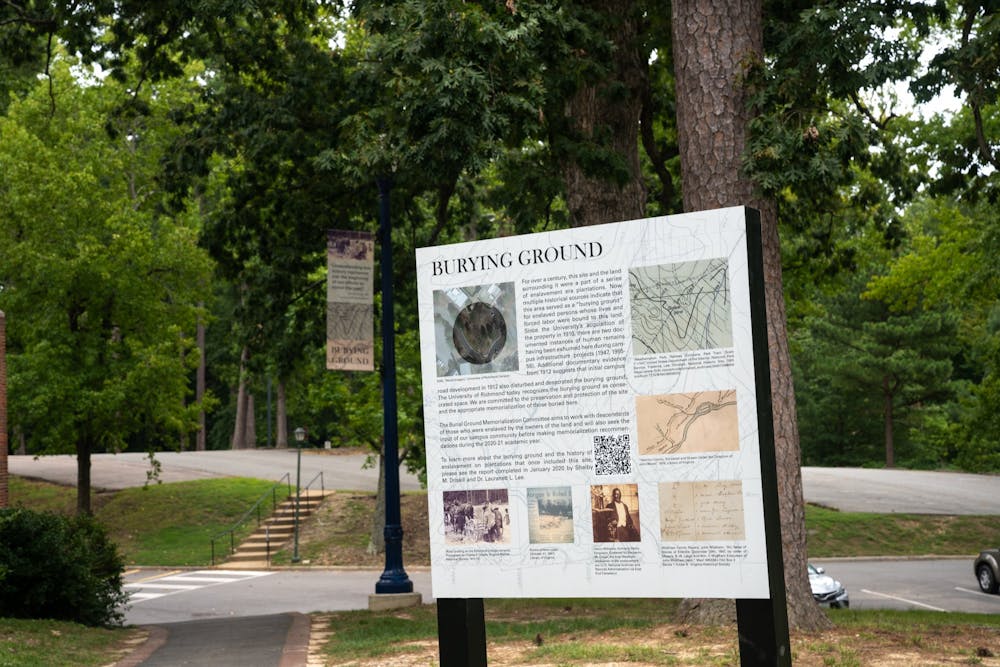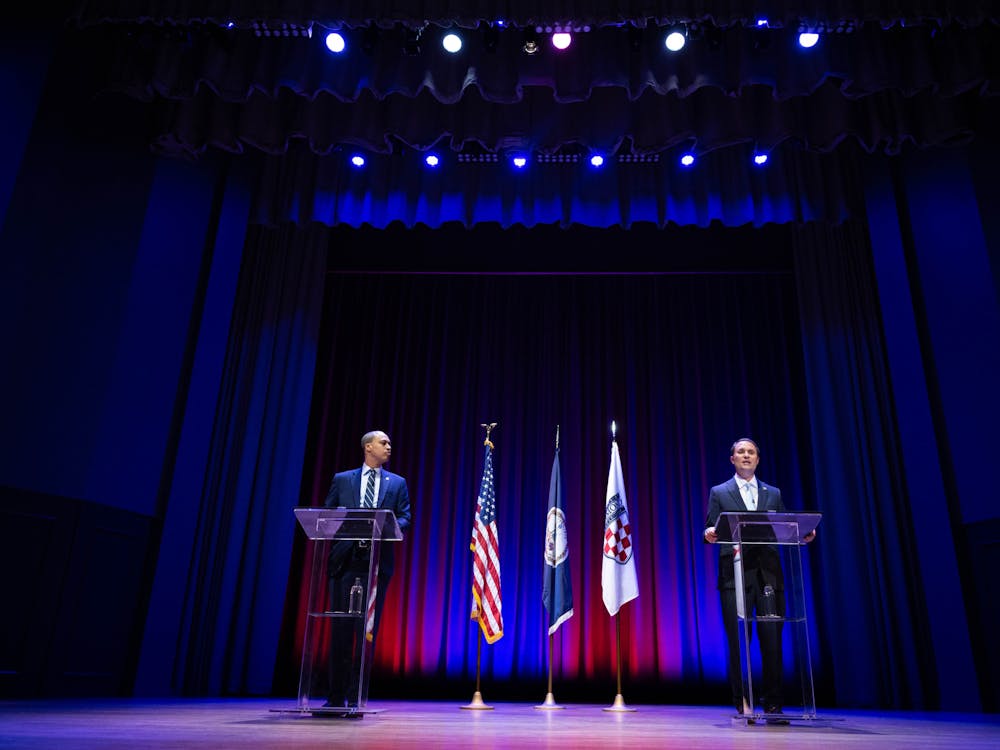Editor's Note: This article was updated to correct a reference to Henry Pryor.
University of Richmond students, faculty, staff and community members gathered on Oct. 13 for the Exploring Design Concepts meeting to discuss the next steps in memorializing the Westham Burying Ground.
The six proposals discussed in the Burying Ground Memorialization Committee’s meeting include a broken infinity sign representing the continued struggle for equality; satellite sites across campus surrounding the burial ground; a family tree to honor the descendant community; a reckoning pool that goes through different stages of flooding each day and features holograms of the deceased; a series of doors representing progress and sentinel statues watching over the burial ground.
The proposals reflect ideas mentioned at community listening sessions, the architects said.
It is important to have these meetings and communicate with the community about people’s feelings towards the six concepts, Burt Pinnock, a Burying Ground Memorialization architect, said.
“Without community involvement the memorialization would have little to no significance,” Pinnock said.
Students from the class “History in a Changing World,” who were encouraged to attend the meeting by professor Lauranett Lee, and a group of law students were involved in the forum.
“I was impressed by the student participation,” Edward Ayers, co-chair of the committee, said.
Brenda Dabney Nichols, the descendant community consultant, preferred the reckoning pool memorialization proposal. It reminded her of slave ships, she said.
Nichols is a direct descendent of Henry Pryor, a formerly enslaved person, who purchased land near campus and created a community called Ziontown.
The reckoning pool and the holograms made her think of her “great great grandfather and the story of what a struggle he had,” she said. In his introduction of the concept, Pinnock described water-based reflection memorials as timeless.
Nichols is grateful to be involved, she said.
Enjoy what you're reading?
Signup for our newsletter
“I see it as an opportunity," she said. "I see it as a privilege.”
Sometimes, Nichols will even wake up in the middle of the night and say, “Oh yes, that’s something else we can do to memorialize and to keep them alive,” she added.
Ayers said that there were many good options among the proposals, and the decision would depend mostly on what aspect of history UR wants to memorialize.
“Our major job is to honor what the descendent community is telling us and listen to what the university community is telling us and see how they align,” he said.
There will be an in-person Finalizing Design Concepts meeting to provide one last chance at sharing perspectives on memorialization on Nov. 17 at 7:00 p.m. It will be open to the whole community.
“I will be satisfied when we’ve heard from all students,” Ayers said. “If people care about the building names, they should care about the burying ground, which, in many ways, is a chance to think more deeply about the history in which we live.”
Contact news writer Jonah Reisboard at jonah.reisboard@richmond.edu.
Support independent student media
You can make a tax-deductible donation by clicking the button below, which takes you to our secure PayPal account. The page is set up to receive contributions in whatever amount you designate. We look forward to using the money we raise to further our mission of providing honest and accurate information to students, faculty, staff, alumni and others in the general public.
Donate Now



